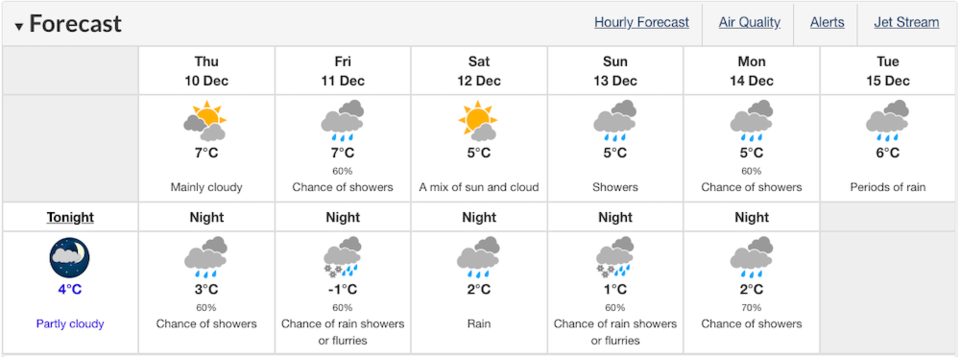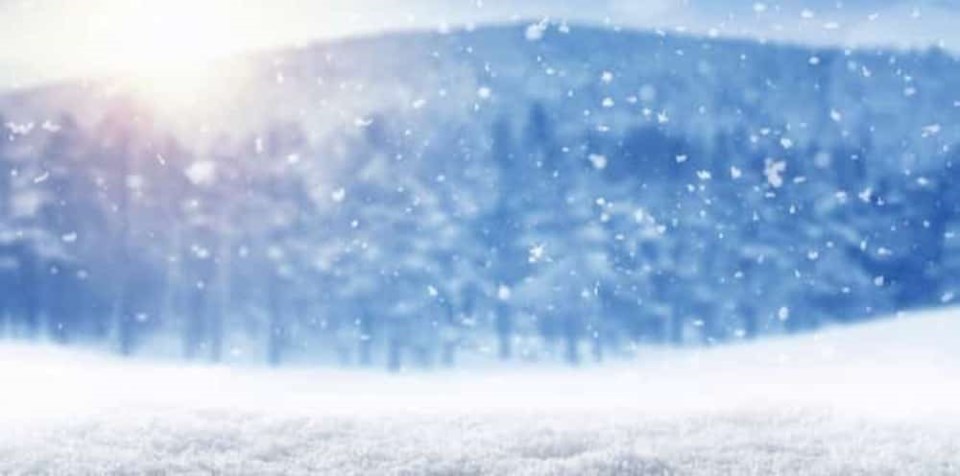Keep your scarves, gloves, and boots handy this week.
While December came in like a lamb for Metro Vancouverites, the rest of the week looks decidedly frigid.
And there's even a chance of flurries in the forecast, too.
Starting on Thursday, Dec. 10, the forecast calls for mainly cloudy, but dry skies during the day. However, there's a 60 per cent chance of showers overnight. Following this, Friday's forecast also calls for a 60 per cent chance of showers during the day, but temperatures are expected to fall to -1°C overnight. Once they do, there's a 60 per cent chance of showers or flurries.
The sun is expected to make a brief appearance on Saturday, with the forecast calling for a mix of sun and cloud during the day. However, Saturday's nighttime forecast calls for rain, which will carry into the following day.
After this, Sunday night's forecast calls for the chance of flurries.
Monday and Tuesday are also expected to see rain, although temperatures are expected to be slightly warmer.
Metro Vancouver Weather Forecast
 Photo via Environment Canada
Photo via Environment CanadaLa Niña Winter
The Canadian Government defines La Niña as "the appearance of cooler than normal waters in the eastern and central Pacific Ocean"—A.K.A. the waters off B.C.'s coast. Sometimes also referred to as "a cold event", the climate pattern is generally considered to be the opposite of El Niño, and is usually great news for skiers and snowboarders hoping for a season full of champagne powder.
"This year we have entered into a linear pattern and it's almost 100% going to stick around for December, January, and February--and beyond. It's a moderate to strong La Niña and with that, what we call a teleconnection is when it's going to actually impact us here in B.C.," says Castellan.
While La Niña was identified back in August, it didn't have a significant bearing on local weather at that time. But mid to late December onward, B.C. will likely see colder than normal temperatures, with a much higher level of certainty than Environment Canada will normally give for seasonal projections, Castellan explains. After that, the pattern is expected to continue into spring.
Read more here.
--With a file from Megan Lalonde.



